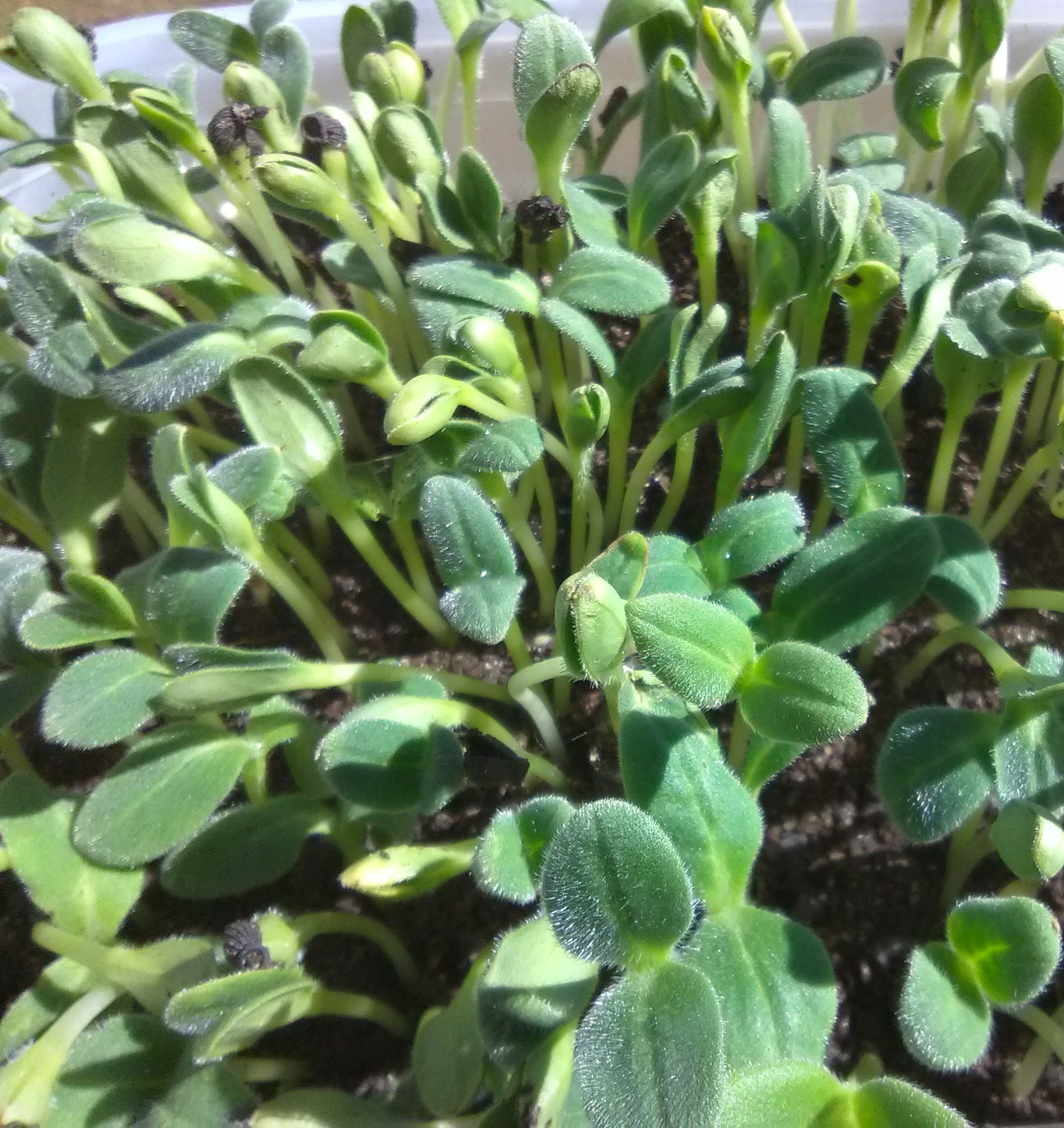Description
Borage Microgreen Seeds
Approx. No. of Seeds per Oz. – 1,500
Days to maturity: 16 – 25 days.
Light Requirements: Bright, consistent light — 12–16 hours daily from a sunny window or grow lights.
Botanical Name: Borago officinalis
Borage Microgreens are tender, bright green leaves with a crisp, juicy texture and a mild cucumber-like flavor touched with sweetness. These heirloom, open-pollinated microgreens are visually striking and bring a refreshing taste to salads, sandwiches, smoothies, and garnishes.
They are ready to harvest in about 10–20 days and are packed with vitamins A and C, calcium, potassium, and antioxidants. Each bite delivers a concentrated burst of nutrition, making them a flavorful and healthy addition to any dish.
While borage microgreens take some patience to grow well, the reward is worth it. Their delicate appearance, fresh taste, and high nutrient content make them a favorite among chefs and home gardeners alike!
Warning: Borage seed oil and all parts of the plant—including leaves, flowers, and seeds—can contain harmful chemicals that may damage the liver or raise the risk of cancer, especially when eaten in large amounts or over a long period of time. Do not consume during pregnancy or while breastfeeding. Always check with a doctor before using borage as a medicine.
Planting Instructions for Borage Microgreen Seeds
When to Plant
Borage Microgreens can be grown year-round indoors, maturing in about 16–25 days. Sow new trays every one to two weeks for a steady supply. If growing outdoors, choose mild conditions and protect from temperature extremes. Once harvested, they will not regrow, so use succession planting to maintain continuous harvests.
Where to Plant
Plant in shallow trays, containers, or clean food-safe packaging with drainage holes, placed inside a second tray to catch water. A sunny south-facing windowsill works well, but if sunlight is limited, use a full-spectrum grow light positioned one to two inches above the plants for 12–16 hours daily. Ensure good airflow to prevent mold.
How to Plant
Step 1: Fill a shallow draining tray with one to two inches of damp seed-starting mix, coconut coir, or another clean growing medium.
Step 2: Smooth the surface lightly without pressing it down too firmly.
Step 3: Scatter borage seeds evenly over the surface, leaving small gaps between seeds to prevent overcrowding.
Step 4: Press seeds gently onto the surface, but do not cover them—borage seeds germinate best with light exposure.
Step 5: Mist lightly with a spray bottle, then cover the tray with a humidity dome, another tray, or a light cloth to maintain moisture during germination.
Step 6: If using grow lights, position them over the tray right from the start to help with both germination and early growth. Place the tray in a warm, dark spot for 3–5 days until seeds sprout, checking daily to keep the medium moist but not soggy.
Growing
Once seeds have sprouted, rotate trays daily if using natural light to encourage even growth. Water from below and avoid wetting the leaves. Maintain consistent moisture and use a small fan on low to improve airflow.
Harvesting
Harvest when plants have developed seed leaves and their first true leaves, usually 16–25 days after planting. Cut just above the soil line with clean scissors or a sharp knife. Borage Microgreens have tender green leaves with a mild cucumber-like flavor touched with sweetness.
Storage
For best flavor, enjoy immediately after harvest. If storing, keep unwashed greens in an airtight container lined with a paper towel in the refrigerator for up to five to seven days. Rinse gently in cool water before use.
Warning: Borage seed oil and all parts of the plant—including leaves, flowers, and seeds—can contain harmful chemicals that may damage the liver or increase cancer risk, especially when consumed in large amounts or over a long period. Do not consume during pregnancy or while breastfeeding. Always consult a doctor before using borage medicinally.
FAQ:
How long do Borage Microgreens take to mature?
Borage Microgreens usually take 16–25 days to reach their prime harvest stage, a bit slower than many microgreens. They develop best flavor and texture once the seed leaves have fully opened.
Are Borage Microgreens harder to grow than other types?
Yes, they can be trickier. Borage seeds germinate more slowly, need consistent warmth, and require careful spacing to avoid crowding. Once you learn their rhythm, though, they reward you with unique flavor and vibrant color.
What kind of light do Borage Microgreens need?
They require bright, consistent light for 12–16 hours daily, either from a sunny south-facing window or a full-spectrum grow light placed one to two inches above the plants.
Can Borage Microgreens be grown year-round indoors?
Absolutely. With a warm room, steady airflow, and bright light (12–16 hours daily), they can be grown in any season, even in cooler climates.
Will Borage Microgreens regrow after cutting?
No. They are a one-harvest crop. To keep a steady supply, plant a new tray every one to two weeks.
How should I store Borage Microgreens after harvest?
For the best flavor and texture, use immediately after cutting. If needed, store unwashed greens in an airtight container lined with a paper towel in the refrigerator for up to five to seven days.
Are there any health warnings for eating Borage Microgreens?
Yes. All parts of the borage plant can contain compounds that may harm the liver or increase cancer risk when eaten in large amounts over time. Avoid during pregnancy or breastfeeding and consult a doctor before medicinal use.
What do Borage Microgreens taste like?
They have a crisp, juicy texture with a mild cucumber-like flavor touched with sweetness, making them excellent for salads, garnishes, and fresh dishes.
How should I plant Borage Microgreen Seeds?
Scatter seeds evenly over damp seed-starting mix or coconut coir, press lightly into the surface without covering, mist gently, and keep covered in a warm location until sprouting.
























Reviews
There are no reviews yet